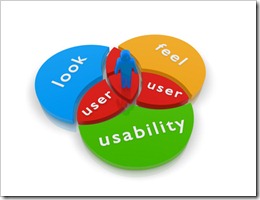
“The way a person feels about using a product, system or service. User experience highlights the experiential, affective, meaningful and valuable aspects of human-computer interaction and product ownership, but it also includes a person’s perceptions of the practical aspects such as utility, ease of use and efficiency of the system.”
In the context of websites, User Experience is an extension of your brand and your site’s “personality.” If you deliver a positive UX, your customers are more likely to have a positive impression of your company, your product or service. If you deliver an inconsistent, unreliable, negative or sloppy UX, it doesn’t matter how spectacular your widgets are: you’re going to have a tough time selling them.
So what goes into creating a positive User Experience? In short, lots of things. To get a sense of what type of UX you’re delivering, you need to put your ego and preconceptions aside and conduct an objective site audit.
Step 1: Baseline Performance Report
Using Google Analytics or another analysis tool, gather as much data as available on your current site performance. This will be your baseline for comparison, but is only one small piece of the UX puzzle.
Step 2: Self Audit
- Start with a comprehensive Site Map for your site. Print it out and use it as a checklist.
- Read every page of your site from top to bottom. Make sure there are no typos or style inconsistencies. Make sure it reads well – accurately and smoothly.
- Make a note of how much of the page content is below the fold. Ideally, no more than 50%. If it’s more than 75%, you need to cut some content, split it up onto multiple pages, or create a downloadable PDF that goes into greater detail about the subject matter.
- Are styles consistently used throughout for headers (H1s, H2s, etc.), body copy, anchor text links, etc.? Not just on a given page, but from page to page.
- View your home page and all the top level navigation pages in IE, Firefox, Chrome and Safari. Maybe even Opera, just for giggles.
- Click on all navigation and anchor text links to confirm they work and deliver the correct destination URL.
- Fill out all contact forms to confirm they work correctly and are being received by the right person in your organization.
- If you have an ecommerce site, go through the entire sales funnel. See what happens when you abandon a shopping cart. Try entering in data incorrectly or incompletely to see how the order form responds. Try to “break” it… particularly if you have identified a place in the process where your visitors consistently drop off.
- Track page load times. Longer than 3-5 seconds? You’re going to lose visitors and negatively impact your ranking with Google.
- Before you proceed to Step 3, fix everything you find.
Step 3: Neutral Audit
- Have a professional copywriter/proofreader review your site from end to end.
- Ask them to check for typos, grammar and formatting.
- Have them read for tone and style. Is it consistent throughout? Does it project the right voice for your business or product?
- Task them with reviewing the site for continuity. So if you click on a link that says “More about Brown Widgets” does it deliver a page that contains content related to brown widgets? If you have a link for FAQs on the Green Widgets page, it needs to resolve to a page that answers questions specifically about Green Widgets, not Yellow Thingies.
- Before proceeding to Step 4, make any corrections necessary based on the findings in Step 3.
Step 4: Friendly Customer Audit
Ask an existing, frequent or returning customer to evaluate your site for you. You can give them a checklist and ask them to respond with comments, or better yet, schedule a brief live session over WebEx or in person. Here are some of the questions you want to ask:
- What do they think of the site overall?
- How would they describe your company? Qualitatively: professional, serious, cool, reliable, friendly, fun, luxurious, etc. Competitively: better than XYZ Company, less expensive than ABC Inc., more customer-focused than Omega Associates.
- Ask them to walk through the order form and tell you how they experience it. Is it easy to get to the right product and place an order? Do they find the process confusing at any point?
- Ask them to find something on your site that is not on the home page. Maybe the newsletter, press releases or company history. Do they find the site navigation intuitive? Are things where they should be? Are things named what they expect them to be named?
- Before proceeding to Step 5, definitely fix any obvious problems. But don’t necessarily jump to conclusions about other more subjective comments. That comes later.
Step 5: Neutral Target Audience Evaluation
Now you want to find someone who fits your target customer profile but is NOT already a customer. Conduct the same audit as in Step 3. Additionally, ask about their initial reactions to the site and how it compares with a product site or company website they currently patronize.
Step 6: Analyze Findings
Analyze the findings from both Steps 4 and 5 and put the comments into four categories:
- Easily and immediately actionable.
- Worth implementing but will require additional resources or time to roll out.
- Very challenging and of questionable return-on-effort; to be revisited at a later date.
- Impossible or unnecessary.
Step 7: Implementation
Finally, map out an Implementation Plan to make improvements to your site’s UX as quickly as possible. Once this is complete, you’ll be ready for the next phase of your UX Optimization project!
Click here for our article on phase two, implementation!